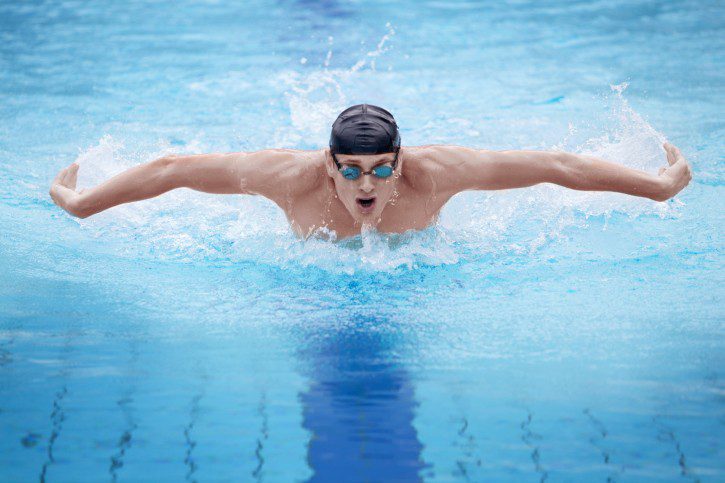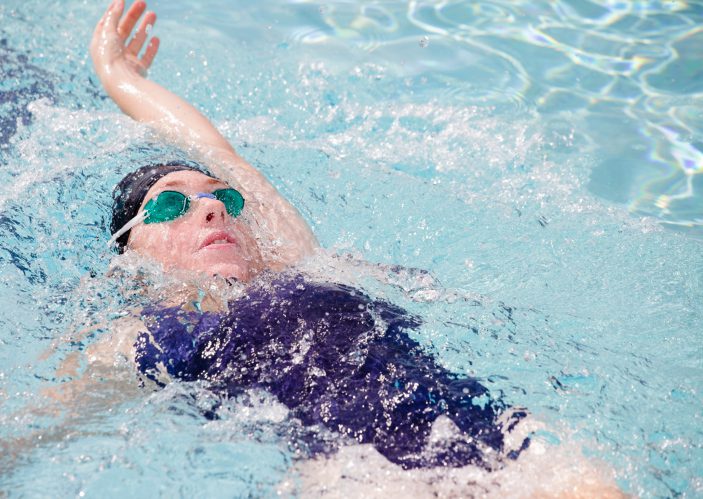Should triathletes train different swim strokes?
The case for learning other swim strokes.

 Many triathletes consider themselves “freestyle only” swimmers, but there are several advantages to learning the other three swim strokes. Triathletes can use butterfly, backstroke, and breastroke to build strength in other muscle groups, reduce risk of injury and break up the monotony in long distance swim sets.
Many triathletes consider themselves “freestyle only” swimmers, but there are several advantages to learning the other three swim strokes. Triathletes can use butterfly, backstroke, and breastroke to build strength in other muscle groups, reduce risk of injury and break up the monotony in long distance swim sets.
Here are some benefits to incorporating different strokes into weekly swim workouts.
Strengthen your core
A strong core aids in swimming, cycling and running. Butterfly is a great workout to build abdominal strength. Each stroke demands that your core muscles exert enough power to pull your arms over the water. Just a few laps of butterfly leaves you feeling the stroke’s effects and burns more calories than regular swimming.
Work your muscle groups
Freestyle isolates your shoulder and lower limb muscles as the main sources of power. Just as butterfly targets the core, backstroke and breastroke works different parts of the body. Backstroke is ideal for improving hip rotation. It also works your shoulder flexibility in the opposite way from freestyle.
A swimmer’s catch strength is important, especially in triathlon where athletes rely on their stroke more than their kick. Breastroke is perfect for building strength in your hands as paddles. This will translate into a stronger catch in freestyle. 
Reduce risk of injury
Training just one stroke can lead to repetitive motion injuries. In the case of freestyle, shoulder problems arise from overuse and inefficient strokes due to fatigue. Longer distance triathletes who swim 3000 to 5000 m. in their sessions can add in sets of different strokes to take the load off their shoulders. You can also switch strokes during long sets when you start to get tired instead of stopping at the wall. Breastroke is great for taking a break while still swimming.
Learn to cope with interruptions
In open water racing, triathletes find themselves having to swerve around other athletes, stop quickly to avoid getting kicked and make tight turns around buoy markers. Incorporating IM (individual medley) sets into your swim workouts will help you learn to adapt to quick changes while swimming. To perform IM, perform a lap of butterfly followed by backstroke, breastroke and finally freestyle. Sets can be as short as 100 metres.
Be careful when adding new strokes into your workout. Have a coach correct your technique to avoid injury. For beginners, adding in new strokes just one workout per week will make a difference.
